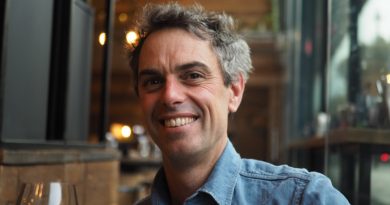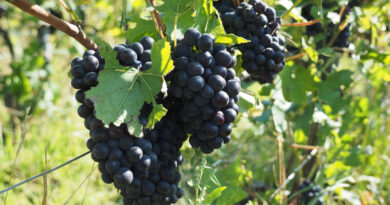My science CV
After reading a recent book review that questioned my scientific credentials (I don’t think they were aware of the first 18 years of my career), I thought it might be worth highlighting my scientific CV. After all, I might expect that someone who knew me just as a wine journalist might find it odd that I’m writing books on wine science.
As the reviewer correctly points out, I was awarded my PhD in 1993 by the University of London. And it wasn’t on viticulture. It used the first stage of growth of moss, the protonema, as a model system to study morphology and the effect of plant hormones on the cystoskeleton. The idea behind using a simpler organism as a model system is well established in biology. In this case, I used sterile culture on a nutrient medium of the tip growing filamentous system produced when moss spores germinate, and looked at what happens when this transitioned from two-dimensional growth (the tip-growing tube) to three-dimensional growth (the shoot: what we think of as moss). This was done jointly between Royal Holloway and Queen Mary Colleges of the University of London. With my supervisors I published several papers in peer-reviewed journals (see the list at the bottom of this article). But the subject of the PhD isn’t the point here. Three years of working in a lab and publishing in journals teaches you how science works.
But my main scientific experience that helps me write a book like this came over a 15 year period when I was employed by the Ciba (later Novartis) Foundation as a science editor, and later a senior editor. Before you scream ‘big pharma’, this was an independent scientific charity funded by Ciba, established after the last war to bring leading scientists together to discuss their work, with an interdisciplinary focus. In joined in 1992 and left in 2008 when Novartis decided to withdraw the funding. Our remit was to hold eight three-day meetings on topics of high current scientific interest, bringing together top scientists either at our London base in Portland Place, or a couple of times a year somewhere abroad relevant to the topic. We chose the ideas for the meetings based on proposals that then went through peer review, and we covered a wide range of disciplines, from cell biology, to medicine, to neuroscience, to epidemiology, to agriculture, to drug development, and more besides. These were small, closed meetings with around 25 participants, and half the time was allotted to discussions. Everything was recorded, and these discussions – after a lot of editing – went into the book at the end of the presented papers. My job was to produce the books.
When I started I did 3 of the 8 meetings each year; by the time I left I did all 8, with the help of an assistant editor. To do this job meant I had to become literate across a wide range of scientific disciplines. I met some of the world’s leading scientists and interacted with them in producing the books. I got to listen to what top scientists say to each other behind closed doors. I also got to travel to interesting places: Nairobi, Melbourne, Tokyo, Kyoto, Dunedin, Baltimore, Berlin, Basel, Manila, Helsinki, Oieras, Amsterdam, Singapore and others. I was also working with words on a daily basis, and this provided an ideal training ground for what I do now.
Some of the books I edited:
- The Cell Cycle and Development
- Hydrothermal ecosystems on earth (and Mars?)
- The molecular basis of taste and smell transduction
- Rice biotechnology
- Alcohol and cardiovascular diseases
- Sensory guidance of movement
- Environmental statistics
- Insect-plant interactions and induced defence
- Rice biotechnology: improving yield, stress tolerance and grain quality
- Novel and re-emerging respiratory viral diseases
- Genetics of criminal and antisocial behaviour
- T cell subsets in infectious and autoimmune diseases
- Variation in the human genome
- The nature and origin of amyloid fibrils
- The molecular basis of cellular defence mechanisms
- Antibiotic resistance: origins, evolution, selection and spread
- Precision agriculture: spatial and temporal variability of environmental quality
- The limits of reductionism in biology
- Germline development
- Higher-order processing in the visual system
- Antimicrobial peptides
- The molecular biology and pathology of elastic tissues
If you are writing about any scientific topic, it helps to be able to know how science works, to be able to read the scientific literature, and also to assign confidence appropriately to what you read. Not all peer reviewed science is equal.
Experience visiting vineyards
But there’s more. You can’t understand viticulture by reading books and papers, and listening to conference presentations. There’s a lot of science being done in vineyards in the world: empirical science based on trial work by people whose skin is in the game, because their livelihood depends on understanding how best to grow wine grapes of an appropriate quality at commercially significant yields. And vineyards around the world are all different. So I’ve travelled and spoken to people doing the work, and I’ve been in lots and lots of vineyards with an inquisitive mind. Here’s a list of wine regions I’ve travelled to since 2014 (the last decade), roughly the period when I’ve been researching and planning my last book, on viticulture. This is just trips to wine regions, not trips to lecture or just judge wine.
- Feb 2014 New Zealand
- March 2014 South Africa
- May 2014 Canada (Niagara)
- June 2014 Provence
- June 2014 Alsace
- June 2014 Canada (Okanagan)
- July 2014 South Africa
- July 2014 Oregon
- September 2014 Bordeaux
- October 2014 Jerez/Sherry
- November 2014 Penedes, Spain
- November 2014 Mendoza, Argentina
- January 2015 Ahr, Germany
- March 2015 South Africa
- April 2015 Spain (Ribeira, Rias Baixas, Ribera Sacra) and Portugal (Minho and Douro)
- May 2015 Franschhoek, South Africa
- June 2015 Canada (Niagara)
- June 2015 Washington State
- July 2015 South Africa
- September 2015 Napa, California
- September 2015 South Africa
- October 2015 Douro, Portugal
- October 2015 Champagne
- November 2015 Veneto, Italy
- December 2015 Australia (Gippsland, Macedon, Yarra Valley)
- Feb 2016 New Zealand
- March 2016 California (Napa, Somona, Paso Robles)
- March 2016 Portugal (Tejo)
- April 2016 South Africa
- May 2016 Beaujolais
- June 2016 Germany (Mosel, Ahr, Pflaz, Rheingau, Wurttenberg)
- June 2016 Canada (Okanagan)
- June 2016 Rioja
- July 2016 South Africa (Franschhoek, Stellenbosch)
- July 2016 Australia (McLaren Vale)
- July 2016 Oregon
- September 2016 Canada (Nova Scotia)
- October 2016 Portugal (Douro)
- October 2016 Rioja
- October 2016 Bordeaux
- October 2016 South Africa (Elgin)
- October 2016 Canada (Prince Edward County)
- October 2016 Provence
- December 2016 Chile and Argentina
- December 2016 Madeira
- February 2017 New Zealand (Marlborough, Central Otago, Waipara, North Canterbury, Martinborough, Hawke’s Bay, Gisborne)
- February 2017 Australia (Mornington Peninsula)
- February 2017 South Africa (Elgin)
- March 2017 South Africa (Franschhoek, Stellenbosch, Hemel-en-Arde, Bot River, Wellington)
- March 2017 Greece
- April 2017 Centre Loire
- April 2017 Champagne
- May 2017 Loire
- June 2017 Canada (Nova Scotia)
- June 2017 New Zealand (Marlborough)
- July 2017 Portugal (Lisboa)
- July 2017 Canada (Niagara)
- July 2017 Oregon
- August 2017 Austria (Carnuntum, Kamptal)
- September 2017 Portugal (Bairrada)
- September 2017 Argentina (Mendoza)
- September 2017 Canada (Niagara)
- September 2017 Australia (Barossa, McLaren Vale, Adelaide Hills)
- October 2017 South Africa (Elgin)
- October 2017 Japan (Yamanashi, Nagano)
- November 2017 France (Burgundy, Jura)
- November 2017 Canada (Prince Edward County)
- November 2017 France (southwest)
- December 2017 New Zealand (Marlborough)
- January 2018 New Zealand (Central Otago)
- February 2018 South Africa (Bot River, Hemel-en-Aarde, Swartland)
- February 2018 Portugal (Douro)
- March 2018 Japan (Nagano)
- April 2018 Beaujolais
- May 2018 New Zealand (Marlborough)
- May 2018 Canada (Okanagan)
- June 2018 Spain (Ribera Sacra, Rias Baixas)
- June 2018 Canada (Okanagan)
- July 2018 Canada (Niagara)
- July 2018 Oregon
- August 2018 New York (Finger Lakes)
- August 2018 New Zealand (Marlborough)
- September 2018 South Africa (Cape South Coast, Stellenbosch)
- October 2018 New Zealand (Hawke’s Bay, Marlborough)
- November 2018 Portugal
- November 2018 Veneto, Italy
- December 2018 Argentina
- January 2019 New Zealand
- February 2019 Portugal
- March 2019 Tenerife
- March 2019 Champagne
- April 2019 Penedes, Spain
- April 2019 Chablis
- May 2019 Montreal and Niagara, Canada
- May 2019 Vancouver and Vancouver Island
- May 2019 Trentino, Italy
- June 2019 Prince Edward County, Canada
- June 2019 Quebec wine country, Canada
- June 2019 Salina, Sicily
- June 2019 Jerez, Spain
- July 2019 Rias Baixas, Spain
- July 2019 Okanagan, Canada
- July 2019 Burgundy, France
- July 2019 Okanagan, Canada
- July 2019 Niagara, Canada
- July 2019 Finger Lakes, New York
- July 2019 Oregon
- July 2019 Vancouver Island, Canada
- August 2019 Languedoc
- August 2019 California (Cucamonga)
- September 2019 Yamanashi and Nagano, Japan
- September 2019 Alentejo, Portugal
- September 2019 Okanagan, Canada
- September 2019 Crete, Greece
- September 2019 Georgia
- October 2019 Beaujolais and Maconnais, France
- October 2019 Okanagan, Canada
- November 2019 Ribera del Duero, Spain
- November 2019 Alentejo
- November 2019 South Africa (Swartland, Stellenbosch, Hemel-en-Aarde, Franschhoek
- December 2019 Mosel, Germany
- January 2020 Uruguay
- January 2020 Netherlands Vineyards
- February 2020 Portugal (Douro, Dao)
- February 2020 Mosel (Germany)
- February 2020 Japan (Nagano, Yamanashi)
- July 2020 France (Languedoc)
- August 2020 Germany (Rheinhessen)
- August 2021 Piemonte
- September 2021 Languedoc
- September 2021 Romania
- October 2021 Canada (Okanagan)
- October 2021 France (Cahors)
- November 2021 Franciacorta, Italy
- February 2022 Portugal (Douro, Vinho Verde)
- March 2022 Champagne
- April 2022 Rhône
- May 2022 Slovenia
- June 2022 Gran Canaria
- June 2022 South Africa (Stellenbosch, Hemel-en-Aarde)
- June 2022 Canada (Niagara)
- July 2022 Portugal
- July 2022 South Africa (Stellenbosch)
- July 2022 Canada (Niagara)
- August 2022 Jerez/Sherry
- August 2022 Costieres de Nimes, France
- September 2022 Chile
- September 2022 South Africa
- November 2022 Alentejo (Portugal)
- November 2022 South Africa (Stellenbosch)
- December 2022 Languedoc, France
- February 2023 Portugal
- February 2023 USA (Oregon, California)
- March 2023 California (Anderson Valley)
- April 2023 Rhône
- April 2023 Tejo, Portugal
- May 2023 Bairrada, Portugal
- May 2023 Penedes, Spain
- May 2023 Piemonte
- June 2023 Finger Lakes, New York
- July 2023 Beaujolais
- July 2023 Rioja
- July 2023 Bourgogne
- September 2023 Austria (Kamptal, Wagram, Wachau)
- September 2023 Sicily (Etna)
- October 2023 Centre Loire
- October 2023 Chianti Classico
- October 2023 Alsace
- November 2023 South Africa
- December 2023 Japan
Peer-reviewed scientific publications
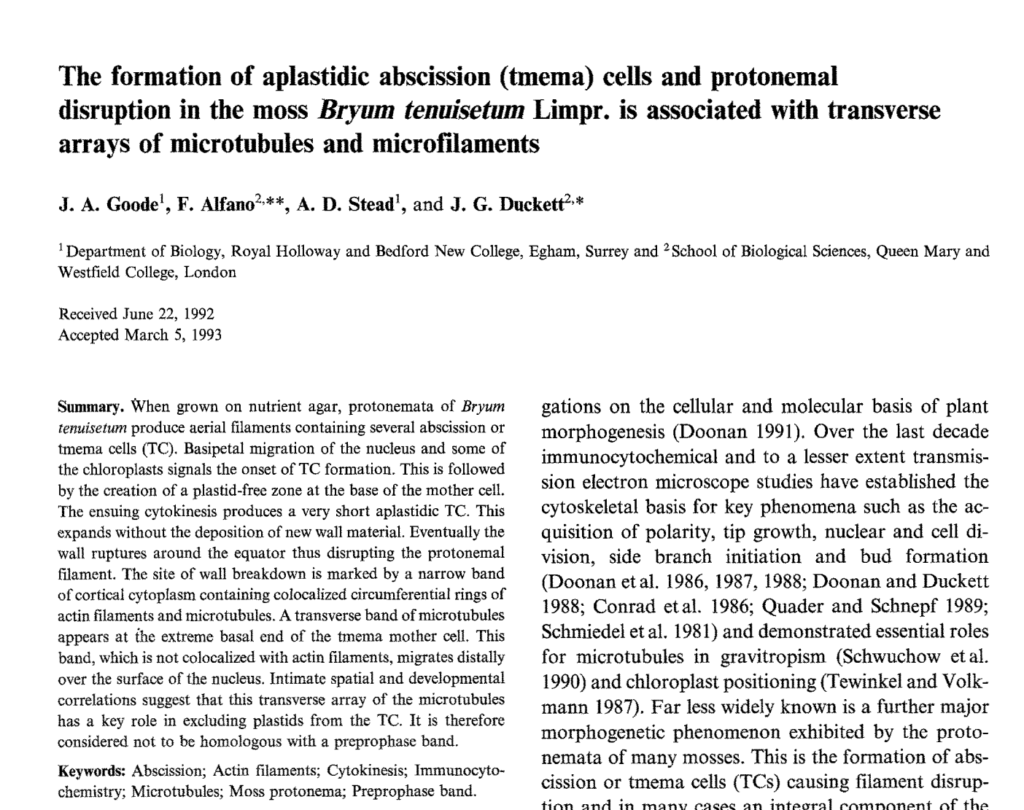
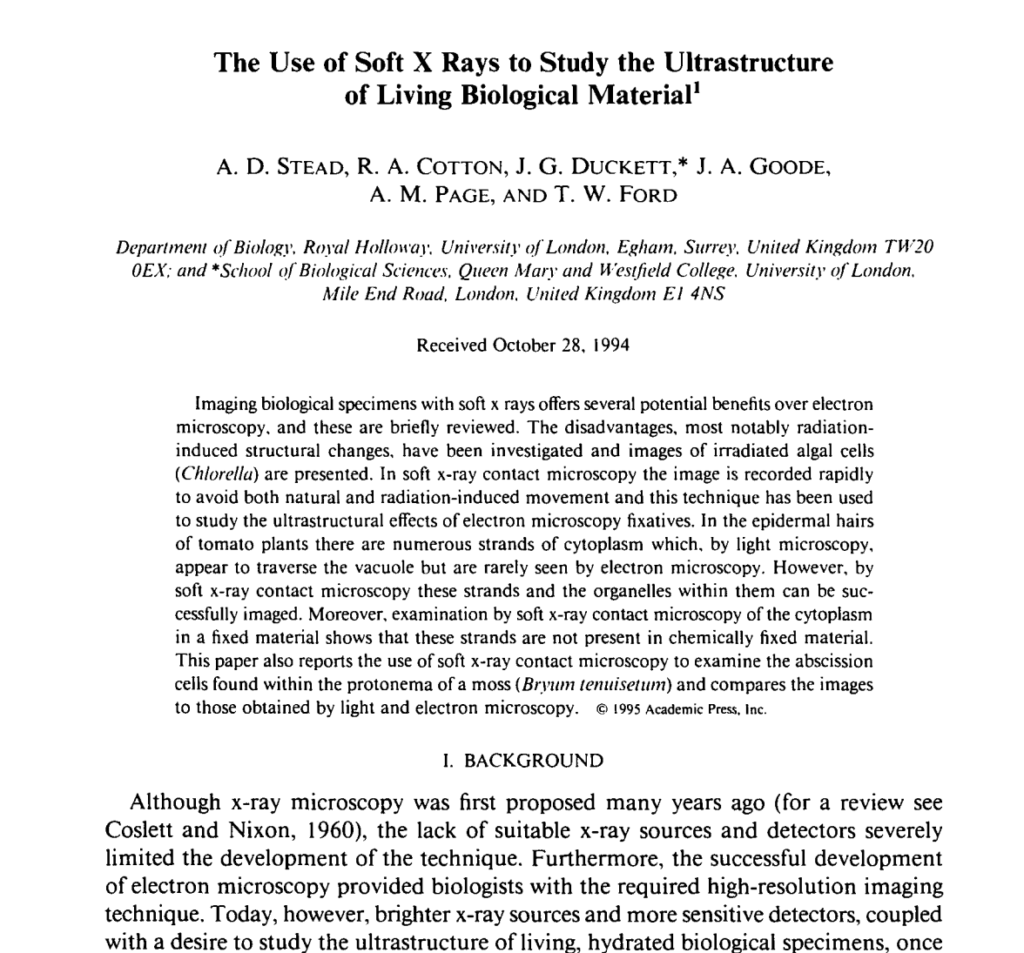
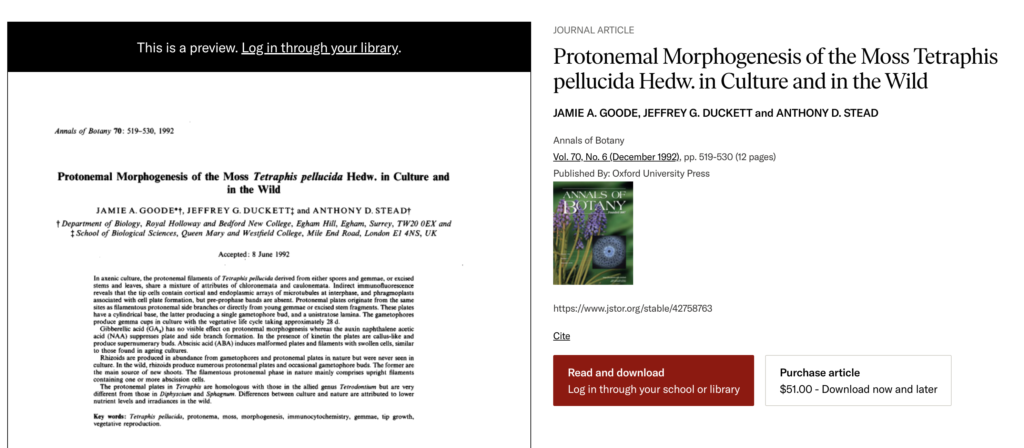
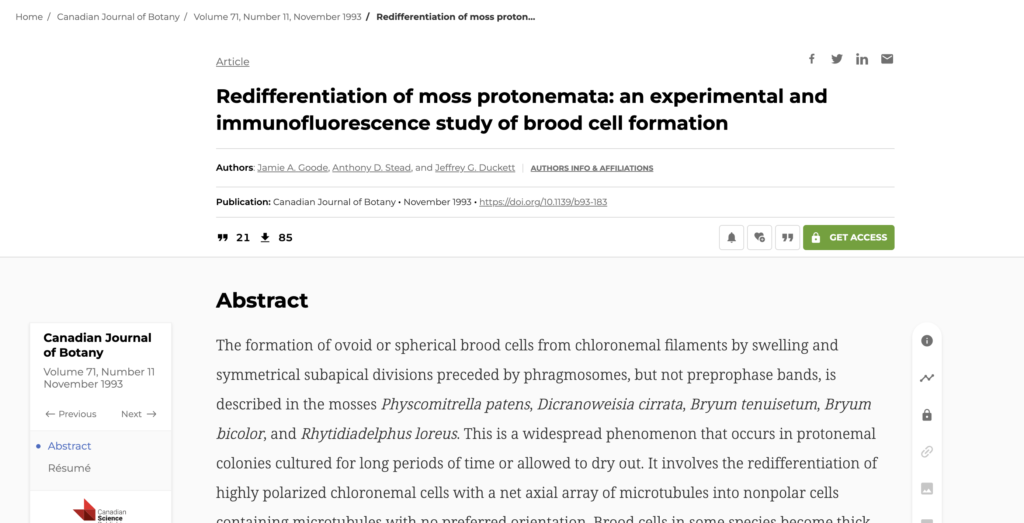
Goode, Jamie A., Anthony D. Stead, and Jeffrey G. Duckett. “Redifferentiation of moss protonemata: an experimental and immunofluorescence study of brood cell formation.” Canadian Journal of botany 71, no. 11 (1993): 1510-1519.
Goode, J. A., F. Alfano, A. D. Stead, and J. G. Duckett. “The formation of aplastidic abscission (tmema) cells and protonemal disruption in the moss Bryum tenuisetum Limpr. is associated with transverse arrays of microtubules and microfilaments.” Protoplasma 174 (1993): 158-172.
GOODE, JAMIE A., JEFFREY G. DUCKETT, and ANTHONY D. STEAD. “Protonemal morphogenesis of the moss Tetraphis pellucida Hedw. in culture and in the wild.” Annals of Botany 70, no. 6 (1992): 519-530.
Goode, J. A., A. D. Stead, and J. G. Duckett. “Studies of protonemal morphogenesis in mosses II Orthotrichum obtusifolium Brid.” Journal of bryology 17, no. 3 (1993): 409-419.
Goode, J. A., A. D. Stead, R. Ligrone, and J. G. Duckeit. “Studies of protonemal morphogenesis in mosses IV. Aloina (Pottiales).” Journal of Bryology 18, no. 1 (1994): 27-41.
Goode, J. A., J. G. Duckett, and A. J. Stead. “Towards an understanding of developmental interrelationships between chloronema, caulonema, rhizoids and plates in mosses: a comparative study.” Cryptogamic Botany 3 (1992): 50-59.
Goode, J. A. “Experimental studies of protonemal morphogenesis in Sphagnum: The role of growth regulations and the cytoskelton.” Advances in Bryology 5 (1993): 129-151.
Duckett, J. G., J. A. Goode, and A. D. Stead. “Studies of protonemal morphogenesis in mosses I Ephemerum.” Journal of bryology 17, no. 3 (1993): 397-408.
Duckett, J. G., J. A. Goode, and H. W. Matcham. “Studies of protonemal morphogenesis in mosses. VIII. The gemmiferous protonemata of Orthodontium and Dicranoweisia.” Journal of bryology 23, no. 3 (2001): 181-193.
Stead, A. D., R. A. Cotton, J. G. Duckett, J. A. Goode, A. M. Page, and T. W. Ford. “The use of soft x rays to study the ultrastructure of living biological material.” Journal of X-ray Science and Technology 5, no. 1 (1995): 52-64.
Stead, A. D., R. A. Cotton, A. M. Page, J. A. Goode, J. G. Duckett, and T. W. Ford. “The use of soft x-ray contact microscopy using laser-plasmas to study the ultrastructure of moss protonemal cells.” Aristov and Erko Aristov (1994): 290.


